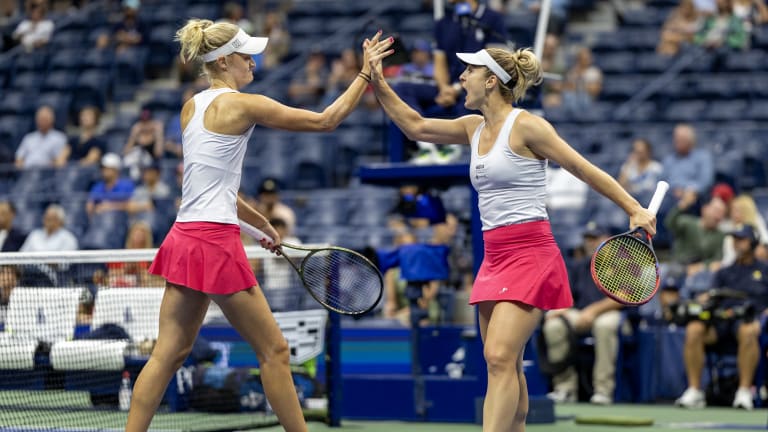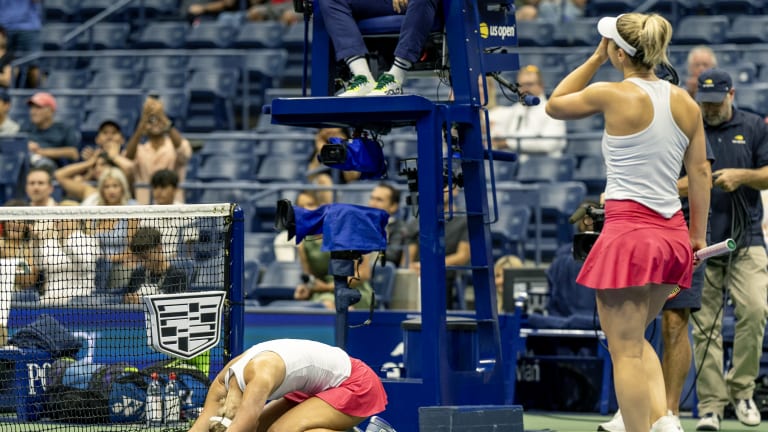WTA Finals
Erin Routliffe and Gabriela Dabrowski, unlikely US Open champions, continue their journey to Cancun
By Oct 26, 2023WTA Finals
How Elena Rybakina rose to a "challenging" 2025 with WTA Finals victory
By Nov 09, 2025WTA Finals
Elena Rybakina finishes 2025 resurgence by beating world No. 1 Aryna Sabalenka to win WTA Finals
By Nov 08, 2025WTA Finals
WTA Finals Final: Sabalenka vs. Rybakina | Where to Watch
By Nov 08, 2025WTA Finals
Aryna Sabalenka finds the answers against Amanda Anisimova to reach second WTA Finals final
By Nov 07, 2025WTA Finals
Elena Rybakina rallies to defeat Jessica Pegula in WTA Finals semifinals
By Nov 07, 2025WTA Finals
WTA Finals Day 7: Pegula vs. Rybakina and Sabalenka vs. Anisimova | Where to Watch
By Nov 07, 2025WTA Finals
"I feel like I belong": Amanda Anisimova builds on career breakthrough at debut WTA Finals
By Nov 06, 2025WTA Finals
Aryna Sabalenka eliminates Coco Gauff from WTA Finals, joins Jessica Pegula in semifinals
By Nov 06, 2025WTA Finals
WTA Finals Day 6: Pegula vs. Paolini and Sabalenka vs. Gauff | Where to Watch
By Nov 05, 2025Erin Routliffe and Gabriela Dabrowski, unlikely US Open champions, continue their journey to Cancun
“This one is completely different because of the team we have around us,” Dabrowski says, “because of the work we’ve put in together.”
Published Oct 26, 2023
Advertising

A most unlikely set of circumstances saw Routliffe and Dabrowski paired at the US Open. They quickly flourished.
© Corbis via Getty Images
Advertising

What’s on Tennis Channel before the 2026 season kicks off?
Five one-night-only events in the U.S. are among the offerings.
Advertising

Sometimes, each player was eager to take over.
© Getty Images
Advertising
Advertising

Game, Set, Recharge
How Tsitsipas, Osaka and other pros embrace the weekly grind.
Advertising

Neither Dabrowski or Routliffe could quite believe that their major debut ended with a major victory.
© Corbis via Getty Images